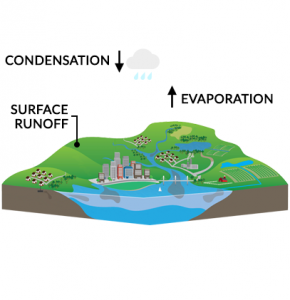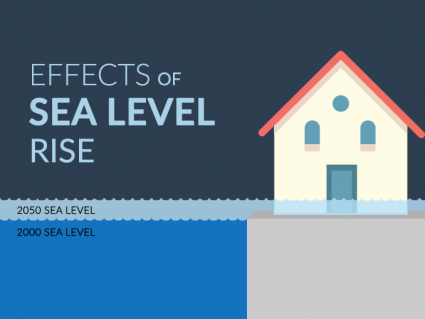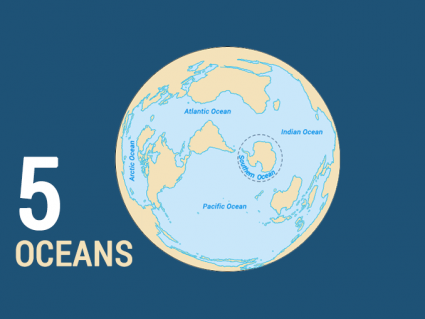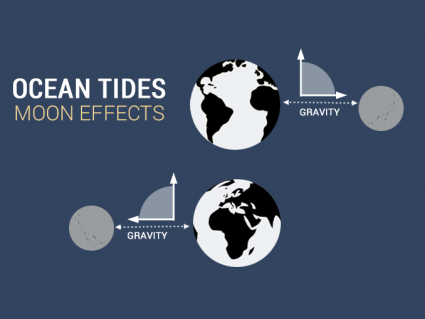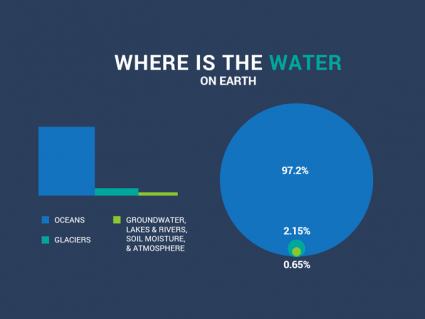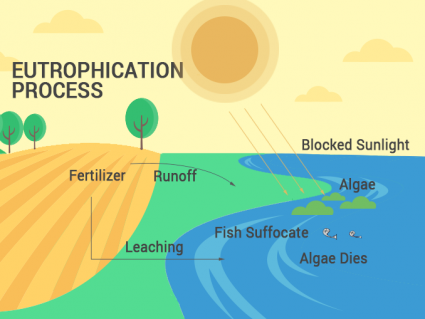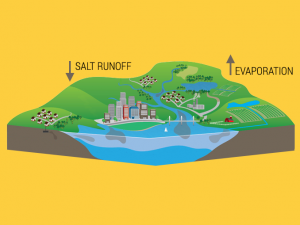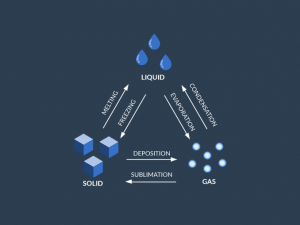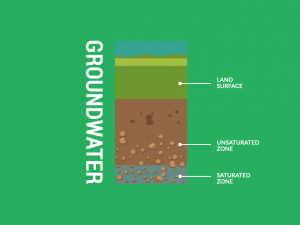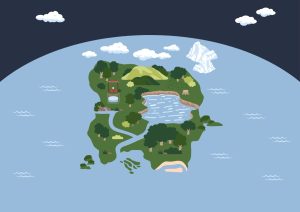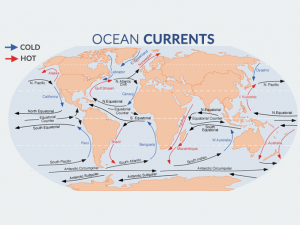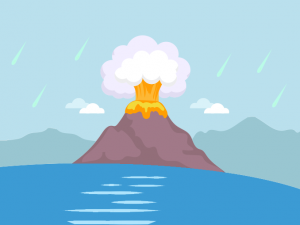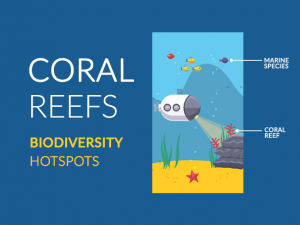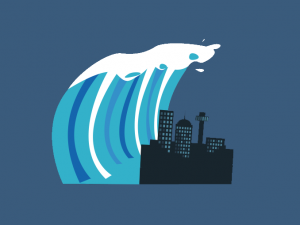What is the Hydrologic Cycle? 3 Steps of the Water Cycle
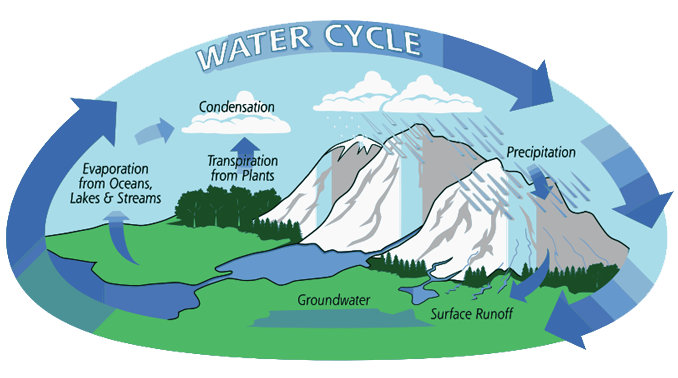
What is the hydrologic cycle?
The hydrologic cycle describes how water moves continuously in nature. From reservoirs to the air and back on land, water is always in motion.
The hydrologic cycle has three main stages:
- Evaporation
- Condensation
- Surface runoff
It’s because water has 3 phases – liquid, solid, and vapor. But how much water falls back into oceans or into streams? And how long does it take to circulate from different pathways?
Today, we give you a gentle introduction to the water cycle. Let’s go through the 3 steps of the hydrologic cycle starting with evaporation.
1. The sun evaporates surface water into vapor

Energy from the sun and interior powers the hydrologic cycle. Solar radiation that reaches Earth triggers the start of the hydrologic cycle by evaporating water. Most evaporation happens at the equator because it has the most sunlight.
EVAPORATION: Water in its liquid state forms weak bonds with other atoms. With enough energy from the sun, it breaks these loose bonds. It isolates an individual molecule that flies off the surface and evaporates into the air.
Most water (90%) that evaporates at the equator falls back into our 5 oceans. Only 10% of water falls back on land because it takes a tremendous amount of energy to turn a liquid into a gas.
That’s good or all the oceans would evaporate away too rapidly. Oceans lose a small amount to supply water to the atmosphere. The heat from the sun drives convection carrying water vapor over land.
2. Water vapor condenses and precipitates
The next stage is condensation which could be in the form of rainfall or snowfall. Water precipitates back into the ocean, streams, glaciers or as groundwater.
Sun drives thermal convection in the atmosphere, or water vapor wouldn’t go anywhere. Then, convection carries water vapor to the land where it precipitates as rain or snow.
Condensation is the process of forming tiny water droplets. It starts by surrounding a particle of dust or salt. Eventually, they become too heavy and fall as precipitation.
- OCEAN PRECIPITATION: 90% of water falls back into the oceans.
- LAND PRECIPITATION: From the 10% that falls on land, the majority of water returns back into the atmosphere as evaporation. But some water flows on the surface into a watershed or basin as runoff.
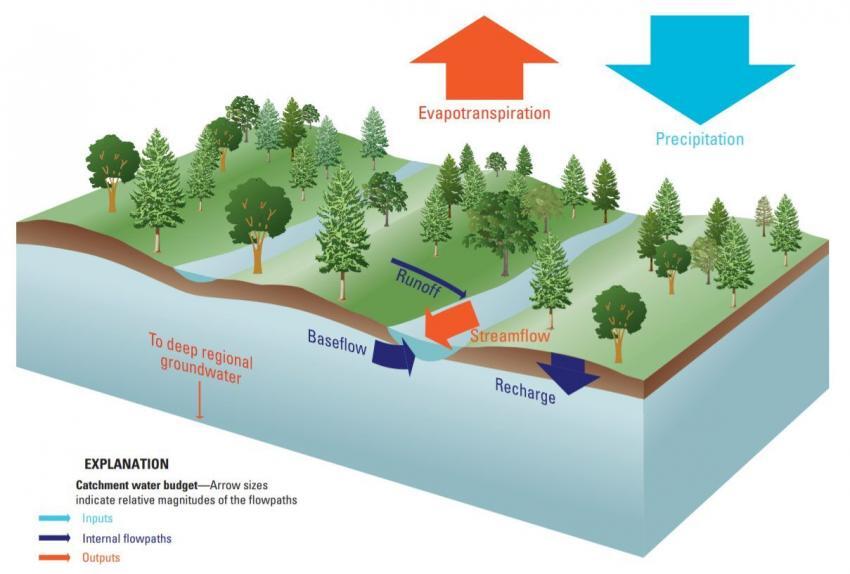
3. Water runs off the surface into streams and reservoirs
At this point, water collects into reservoirs. For example, these are all potential reservoirs for water:
- Glaciers
- Lakes
- Oceans
- Streams
- Atmosphere
- Biosphere
- Groundwater
Of all the water that exists, 2.15% is glaciers mostly in Greenland and Antarctica. Groundwater makes up about 0.65% of water and freshwater lakes are only 0.009%.
Transpiration on the surface also absorbs water into the roots of plants. It carries the water through plants and then transpires out of the roots. So very little water goes back into streams and lakes.
SURFACE RUNOFF: The water that does reach land eventually flows back into the ocean. This is the endpoint for the hydrologic cycle where it continues the hydrologic cycle again.
What are the pathways of the water cycle?
How much time does it take for water to go into each reservoir? The residence time describes how long a water molecule spends in a reservoir before or following a pathway out into another.
In the atmosphere, water has a fast residence time. It spends less than a day in the atmosphere on average before precipitating to land. This is the first step that provides enough water to power the hydrologic cycle.
RESIDENCE TIME: Residence time for water on the surface as groundwater is much longer compared to the atmosphere or streams. If water is in the soil, it could be months. Or if water is in rocks or crust as groundwater, it could take hundreds or thousands of years.
Finally, glacial ice fluctuates most for residence time. During an ice age or a warm period of time, it can stay on a particular pathway for longer. This ultimately drives sea levels up and down.
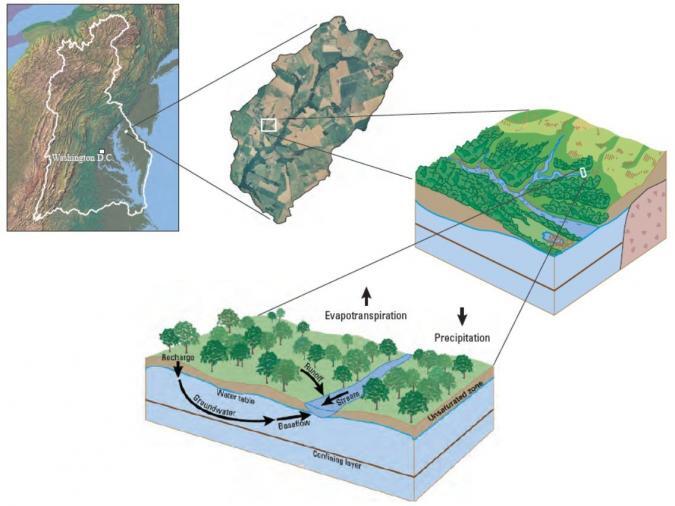
What is the Hydrologic Cycle?
The hydrologic cycle is a continuous process that takes place in nature that includes evaporation, condensation, precipitation, runoff, and groundwater recharge. Each stage transfers water from one place to another within a hydrosphere.
The process starts with sunlight heating the surface of a body of water to evaporate water into the air above it. As this vapor rises into the atmosphere, it cools and then becomes rain or snow (condensation).
Then, it falls back down to Earth as precipitation in liquid form, either directly to the ground or through cloud droplets before eventually reaching the ground again.
Have any questions? If you just want to get in touch with us, please use the comment form below to share any thoughts you might have.

